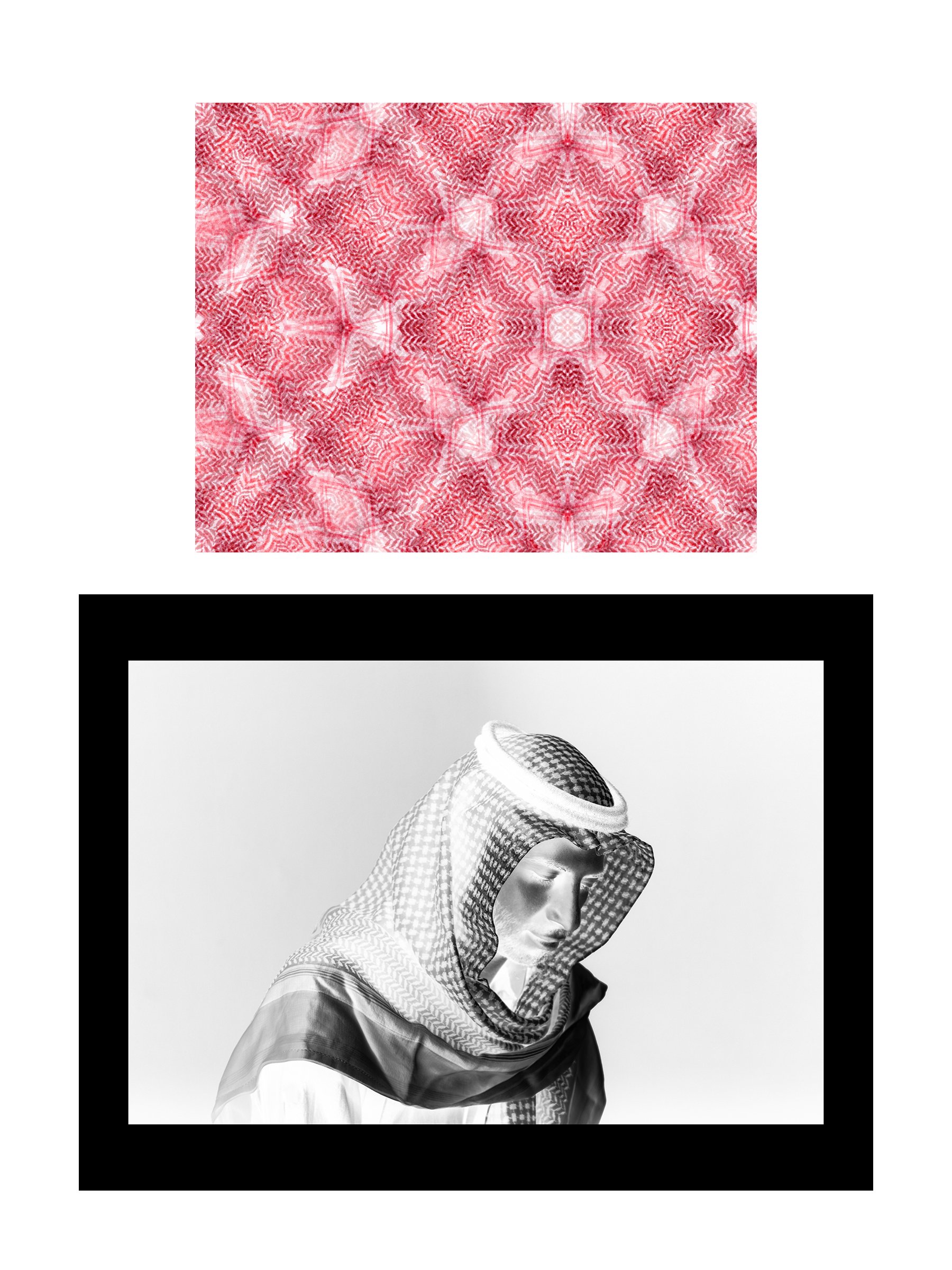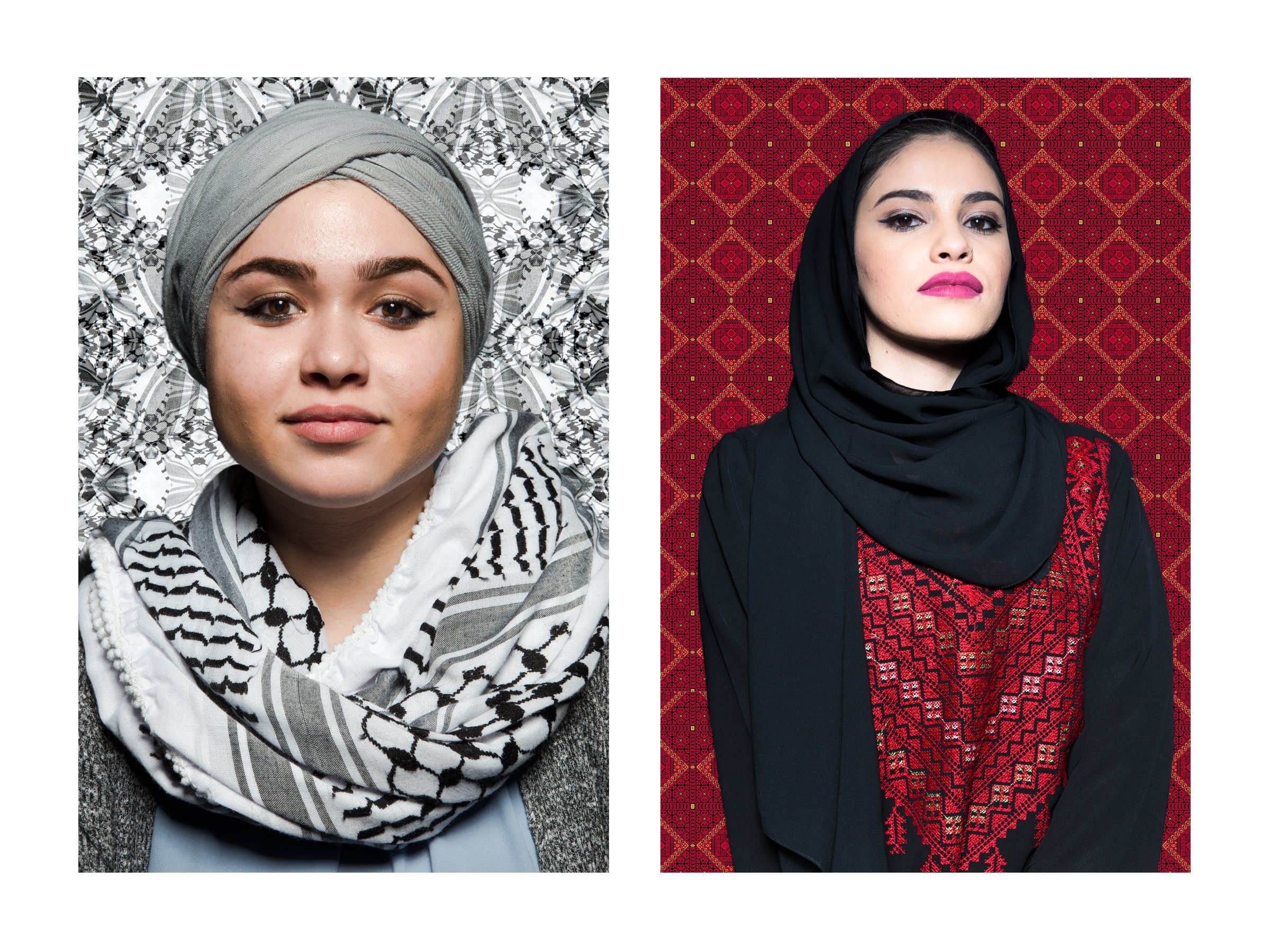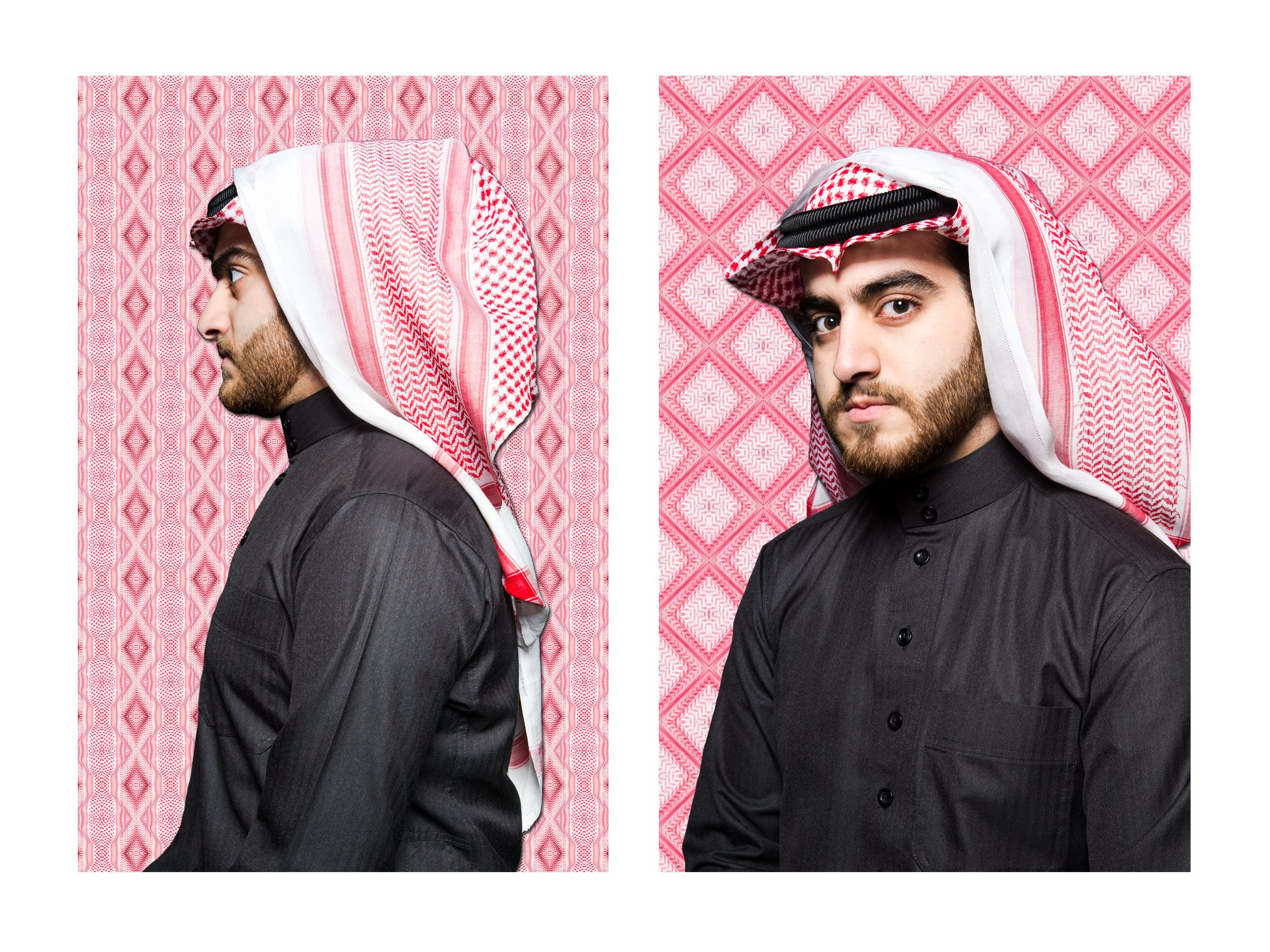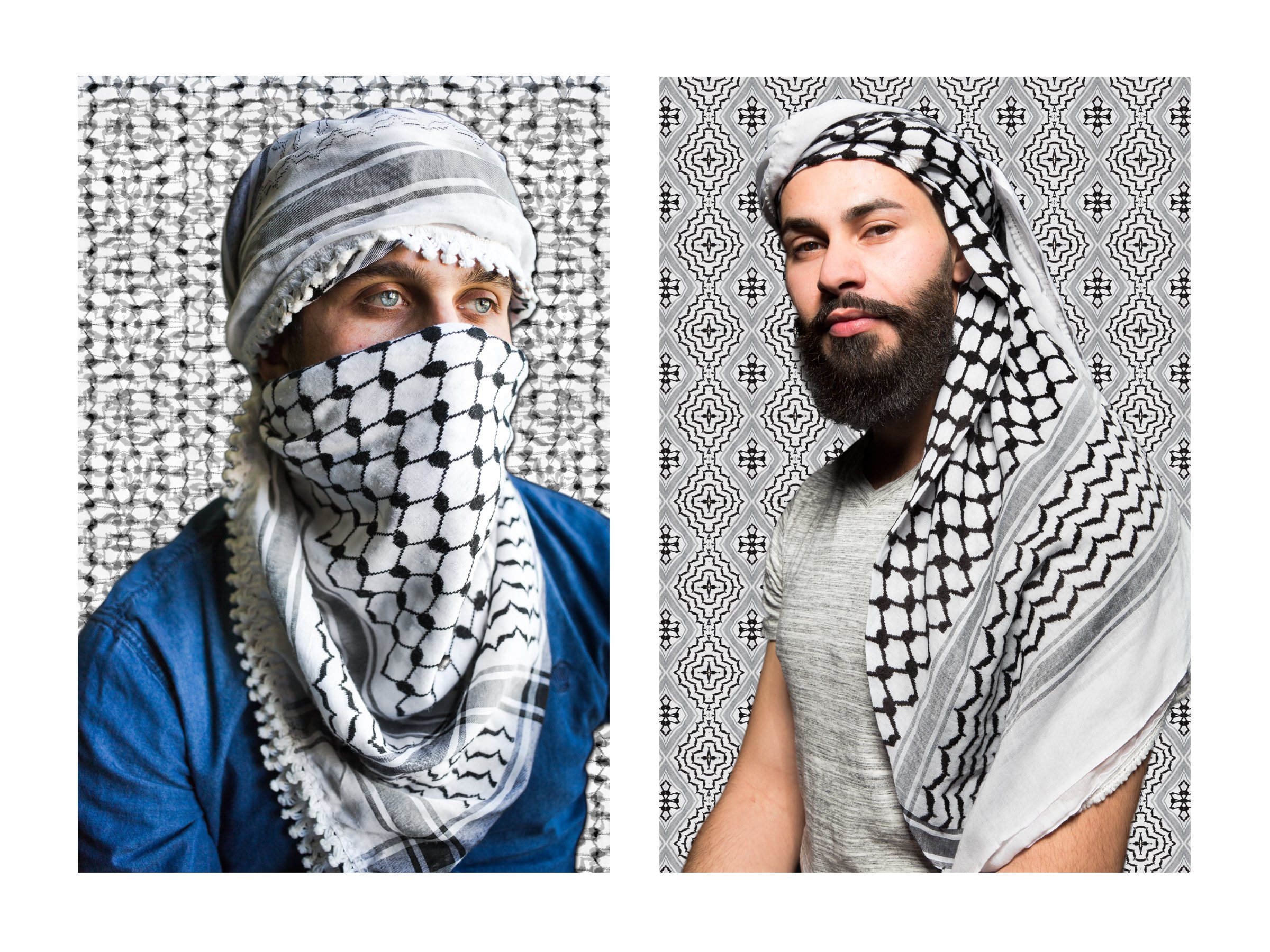the agony of misconception
Salted paper prints and digital negatives, (2016)
The Agony of Misconception: Exploring Perceptions of the Arab and Muslim Communities.
"The Agony of Misconception" (2015 - 2021) is the photographic research project that delves into the perceptions surrounding the Arab and Muslim communities as portrayed in various media. It seeks to uncover and challenge the stereotypes deeply entrenched in the social and political fabric of the Middle East. Through a particular focus on the traditional attire of robes, veils, and headdresses, this project aims to shed light on the complexities of Arab identity and the rich diversity within Islamic beliefs across different countries.
The visual research centers on the vibrant and evolving culture of the Shemagh, Tatreez, and Keffiyeh, exploring their significance as symbols of Intangible Cultural Heritage and Resistance within the Arab community. Simultaneously, it investigates the erroneous associations of these symbols with terrorism and misconceptions made by outsiders. By examining the traditions of headscarves and textiles, the project aims to highlight that the denominated Middle Eastern region encompasses more than just the Muslim faith, including other religious and ethnic “minority” groups such as Christian Arabs.
Through the exploration of fabrics, their cultural significance, and the diverse ways in which they are folded, the project seeks to reveal the profound respect and attachment that individuals within these communities have for their respective cultures and religions. It aims to challenge preconceived notions and foster a greater understanding of the nuanced identities, customs, and beliefs that shape Arab and Muslim communities.
"The Agony of Misconception" invites viewers to reflect on the power of perception, encouraging reevaluating our understanding of diverse cultures and fostering a more inclusive and empathetic perspective. Through these visual narratives, the project aims to contribute to a broader dialogue that dismantles misconceptions and cultivates appreciation for the richness and complexity of the Arab and Muslim communities.
Salted paper prints and digital negatives, (2016)
Salted paper prints and digital negatives, (2016)
Symbols of Resistance:
The Power of the Keffiyeh and the Tatreez
Digital textile pattern recreation: The Shemagh, mixed media, (2017)
"Symbols of Resistance" explores the significance of the Keffiyeh, the iconic white and black patterned headscarf, and the Tatreez, a black thawb adorned with traditional Palestinian embroidery motifs. These symbols raise awareness of their role as powerful expressions of Palestinian resistance and their deep integration into everyday life.
Palestinians have forged lives rooted in resistance against a system of ongoing oppression. Their very existence has become an act of defiance. Over the past 75 years, since the Nakba (the Catastrophe), Palestinians have mourned the loss of their land and grappled with the illegal occupation imposed by Israeli settlements. Throughout the history of their struggle against occupation, apartheid, displacement, and injustice, the Keffiyeh and the Tatreez have emerged as potent symbols of resilience.
The Keffiyeh, with its distinctive white and black pattern, holds deep cultural symbolism that embodies the fight against land occupation and the erasure of Palestinian identity. This traditional headscarf serves as a visual representation of resistance, encapsulating the determination to reclaim their homeland and assert their ethnic heritage.
In parallel, the Tatreez, a black thawb adorned with traditional Palestinian embroidery motifs, honors the crucial role played by Palestinian women in the resistance. The ancient art of Tatreez, originating three thousand years ago in Palestine, celebrates the creativity and resilience of these women. Through intricate embroidery, colored threads are skillfully woven into patterns, each carrying symbolic significance tied to specific villages, regions, and important events within Palestine's history.
Symbols of Resistance: intends to highlight the profound meaning behind the Keffiyeh and the Tatreez. By showcasing their cultural and historical significance, this part of the project seeks to honor the Palestinian struggle, challenge misconceptions, and foster a deeper understanding of the resilience, strength, and collective spirit that define the Palestinian people.
The Keffiyeh, scanned BNW gelatin silver print, (2015)
Digital textile pattern recreation: The Tatreez, mixed media, (2019)
Digital textile pattern recreation: The Shemagh, mixed media, (2019)
The Culture of the Shemagh
The culture of the Shemagh holds immense importance within the Arab community. Originating in the Arabian Peninsula, this traditional headscarf has been worn by people across the region, including countries such as Saudi Arabia, Yemen, Iraq, Jordan, Syria, Lebanon, Palestine, and others. With its distinctive design and versatile functionality, the Shemagh has historically served as protection against the desert's harsh elements, shielding individuals from the scorching sun, blowing sand, and chilling winds. Beyond its practical use, the Shemagh holds cultural significance as a symbol of identity, tradition, and pride. Its intricate patterns and colors vary across different countries, reflecting the diverse cultural tapestry of the region. The Shemagh serves as a tangible link to the past, connecting individuals to their ancestors and the rich history of their land. It embodies a sense of pride, unity, and solidarity, fostering a strong sense of community and belonging. The Shemagh's cultural origin and history are deeply rooted in the Middle Eastern heritage, transcending generations and maintaining its relevance in contemporary Arab culture. It symbolizes the enduring traditions and shared history of the Arab people, embodying the values of resilience, heritage, and unity.
Dual هوية (identity), scanned 4x5’’ color slide film, Arab Christians from Amman, Jordan, (2017)
Dual هوية (identity)
The diptych titled "Dual هوية (identity)" delves into the intricate narrative of Christian Arabs, unraveling the complexities that shape their sense of self. Challenging the notion of a monolithic Arab identity, this artwork exposes the limitations of a 'single story' narrative, urging viewers to consider the layers left unseen. It prompts contemplation on how our identities are influenced by our lived experiences, our perceptions of existence, and our place in the world as individuals. The artwork unveils the concealed dimensions within cultural and religious identities, shedding light on the underrepresented reality often overshadowed by the portrayal of Arabs as a homogeneous entity. By acknowledging the diverse tapestry of the Middle East region, it emphasizes the existence of multiple narratives and the rich complexities that define the Arab identity.
Digital textile patterns recreations, mixed media, (2019)















